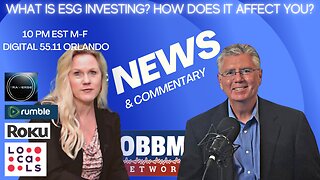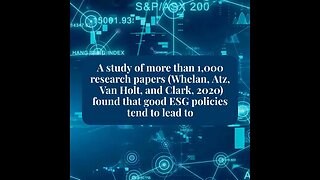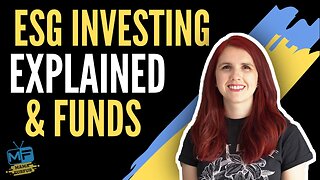Introduction to ESG Investing
In a world where investments play a crucial role in shaping the social, economic, and environmental landscape, the concept of ESG (Environmental, Social, and Governance) investing has gained significant traction. In essence, ESG investing is an approach to managing assets where investors consciously incorporate ESG factors in their investment decisions. This video is a brief indtroduction of ESG investing, its implications, and its potential impacts on the investment world.
ESG Defined
ESG investing aims to correctly identify, evaluate, and price social, environmental, and economic risks and opportunities, keeping the long-term return of an investment portfolio in mind. However, there is no universal standard for assigning E, S, and G issues; their categorization largely depends on the specific properties of investors, businesses, and their stakeholders.
Environmental Factors pertain to interactions with the natural world, including the use of renewable and non-renewable resources like water, minerals, and ecosystems.
Social Factors affect human lives, involving management of human capital, animals, local communities, and clients.
Governance Factors cover practices tied to countries, jurisdictions, or industries and the interests of broader stakeholder groups.
Notable examples of ESG issues include climate change, waste, human rights, working conditions, bribery, corruption, and board diversity, to name a few.
The Evolution and Implication of ESG Investing
ESG investing recognizes the symbiotic relationship between social, environmental, and governance issues and investment. It acknowledges that these factors can influence risk, volatility, and long-term return of securities. Simultaneously, investments can have both positive and negative impacts on society and the environment.
This paradigm shift in investing principles is closely tied to the concept of corporate sustainability and corporate social responsibility (CSR). Corporate sustainability aims to create long-term stakeholder value through an ethical, social, environmental, cultural, and economic approach. Modern CSR goes beyond just philanthropy; it strategically embeds principles-based behavior into a firm's business model.
The Triple Bottom Line (TBL) Accounting Theory
The TBL concept introduced by John Elkington played a pivotal role in shaping today's understanding of corporate sustainability. It expanded the traditional accounting framework to include social and environmental impacts alongside profit, often referred to as the three Ps: people, planet, and profit. However, the original TBL concept has since evolved and is now part of a broader sustainability framework.
Managing a company's sustainability effectively can provide a myriad of benefits. It can reaffirm a company's license to operate, increase efficiency, attend to regulatory requirements, reduce the probability of fines, improve employee satisfaction, productivity, and even drive innovation.
Conclusion
ESG investing is no longer a niche concept; it's a critical component of responsible investment that shapes not just a portfolio's return but also the world we live in. There are numerous organizations and institutions contributing to the further exploration of interactions between society, environment, governance, and investment. As an investor or a financial professional, understanding and integrating ESG issues into your portfolio is not just an ethical choice; it's a strategic one.
-
 27:37
27:37
OBBM Network Weekly News
1 year agoWhat IS ESG Investing? How Does it Affect YOU?
111 -
 15:37
15:37
Research N Design Finance
10 months agoGreen Or Greed? Revealing The True Effects Of ESG Investing in 2023 🌱💰
118 -
 24:16
24:16
Ken Winsor
11 months agoBlackRock C.E.O. Larry Fink on ESG Investing
85 -
 5:59
5:59
Website with WordPress
1 year agoWhat Does Introduction to Investing Do?
9 -
 2:51
2:51
greenstreetinv
1 year agoESG- Is it good for the average investor?
7 -
 2:51
2:51
greenstreetinv
1 year agoESG- Is it good for the average investor?
18 -
 0:59
0:59
quantifiedstrategies
1 year agoHow to trade ESG - Trading Strategies (Backtest And Example)
175 -
 7:32
7:32
Website with WordPress
1 year agoThe Facts About "Getting Started with Retirement Investing: A Beginner's Guide" Uncovered
37 -
 16:04
16:04
Tony Katz
1 year agoUnderstanding Why ESG Investing Is So Dangerous, with Andrew Stuttaford
272 -
 10:08
10:08
Mamafurfur
3 years agoWHAT IS ESG INVESTING? Where do you buy ESG funds in the UK?
1